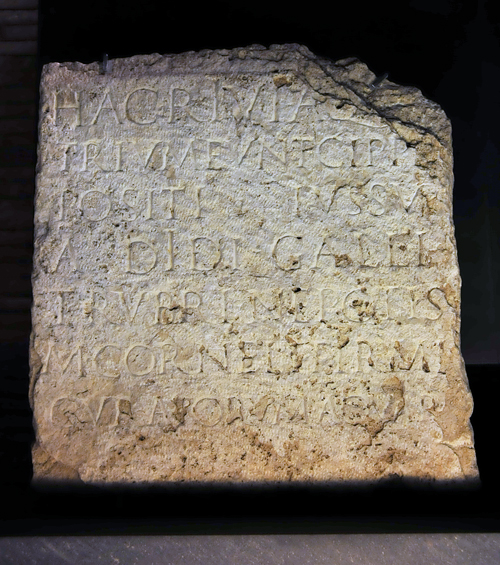
"From here pass the conduits of three aqueducts [Aqua Marcia, Aqua Tepula, Aqua Julia]. The cippi were placed by Aulus Didius Gallus, Titus Rubrius Nepos and Marcus Cornelius Firmus, managers of the aqueducts and the water supply."
The cippus was a boundary stone that demarcated the routes of private roads and the distances of public ones—which, because each marker was progressively numbered, effectively served as a milestone. Cippi also delimited the sacred boundary of Rome (pomerium) and the banks of the Tiber, as well as marking the course of an aqueduct and separating its space from public or private land, which was to be left clear of development. Introduced by Augustus, the disposition of cippi was overseen by the curator aquarum, who maintained the aqueducts to ensure a sufficient supply of water to Rome, although concessions for private consumption were the prerogative of the emperor (Frontinus, The Aqueducts of Rome, LXXVIII.2).
No cippi record the name of an emperor later than Claudius (AD 41–54). The one above dates to AD 38–49 and was discovered in 1869 at the Villa Negroni in Rome. Half a century later, Count Negroni was said to have invented his eponymous cocktail.
The cippus is in the Galleria Lapidaria of the Musei Capitolini (Rome).